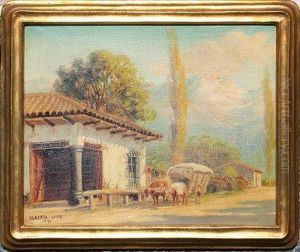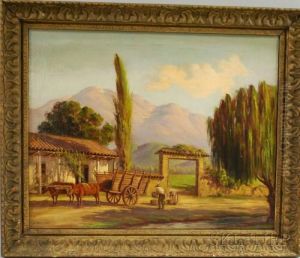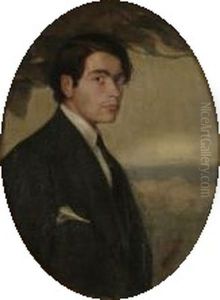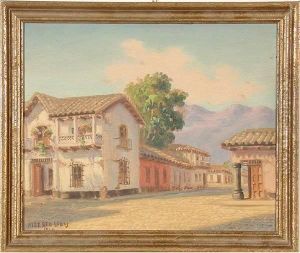Alberto Lobos Paintings
Alberto Lobos was a Chilean painter, born on November 29, 1892, in Rancagua, Chile. He was one of the Lobos brothers, all of whom were important figures in the early 20th-century Chilean art scene. His brothers Enrique and Guillermo Lobos were also accomplished artists. Alberto was particularly known for his contributions to the development of Chilean landscape painting and is often associated with the movement to establish a unique Chilean artistic identity, separate from European influence.
Alberto Lobos began his artistic education at the Escuela de Bellas Artes in Santiago, where he studied under notable Chilean painters such as Pedro Lira and Alberto Valenzuela Llanos. His early work was influenced by the academic style of painting, but he soon developed a more personal and expressive approach that sought to capture the essence of the Chilean landscape and its people.
In the 1910s, Alberto, along with his brothers and fellow artists, formed the Grupo Montparnasse, named after the Parisian neighborhood famous for its bohemian artist community. This group was instrumental in the introduction of new ideas and isms from Europe, such as Impressionism and Post-Impressionism, into Chilean art. However, despite their exposure to European trends, Alberto Lobos and his colleagues were committed to creating an art form that was distinctly Chilean by focusing on local subjects and settings.
Alberto Lobos's work was characterized by bold colors, dynamic brushwork, and a focus on the dramatic landscapes and rural scenes of Chile. He was particularly adept at capturing the light and atmosphere of different settings, from the arid deserts of the north to the snow-capped Andes and the lush central valleys. His paintings often depicted peasants and indigenous Mapuche people, reflecting his interest in representing the diverse cultures and classes of Chilean society.
Tragically, Alberto Lobos's life and career were cut short when he died on August 27, 1925, at the young age of 32. Despite his brief career, his work had a lasting impact on Chilean art and he is remembered as a pioneer in the development of a national artistic identity. His paintings are still celebrated today for their vibrant depiction of Chile's landscapes and culture, and his legacy lives on in the collections of Chile's national museums and galleries.



